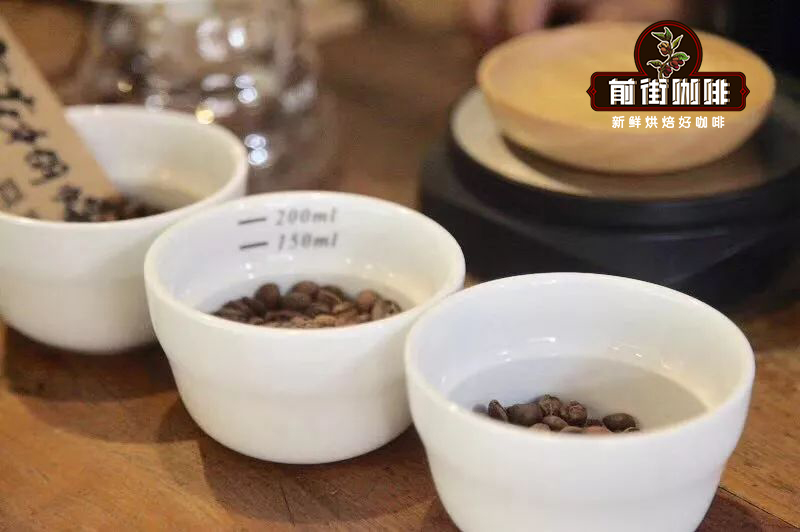Flavor description of Costa Rican coffee beans
In Costa Rica, in addition to the coffee bars in the north and south, the unique highland volcanic soil environment, acidic soil and trace elements, high altitude and suitable difference between day and night make Arabica coffee grown in this land. Unique boutique grade high-quality coffee.
Tarrazu Tarazhu producing area, is the best coffee producing area in the country, high-quality coffee needs the planting environment, altitude, soil, climate, Rain Water, forest. In full compliance, the average altitude of the Tarrazu Tarazhu producing area is 1300M-1600M, making more than 95% of the coffee beans have the superior quality of "SHB extremely hard beans", and has won the title of Costa Rica's "COE Cup". The diurnal temperature difference of Gao Hai and the rich trace elements in the volcanic soil make Tarazhu coffee beans less sharp of Guatemala, soft and bright, delicate and refreshing, sweet sugar and bitter nuts, and the delicate, sour and sweet taste of many kinds of berries. it has become a classic sought after by the world's top coffee connoisseurs.
Follow the caf é (Wechat official account vdailycom) and found that Beautiful Cafe opened a small shop of its own.
Costa Rica is located in the volcanic belt of the low latitudes of Central America, with the central plateau and mountains about 800 to 2000 meters above sea level.
The climate here has two obvious dry and wet seasons. The harvest period is from November to March of the following year, which coincides with the dry season, and coffee fruits of high quality and consistent maturity can be harvested. The dry season also provides sunshine conditions for the sun treatment, ensuring adequate precipitation in the rainy season. The fertile and well-drained pozzolanic soil provides sufficient nutrients for coffee growth, coupled with the growth advantage of high altitude, which has become a prerequisite for the breeding of high-quality coffee in Costa Rica.
Costa Rica's law only allows the planting of Arabica varieties, and Robusta is "contraband" in its territory, which shows the importance Costa Rica attaches to the quality of coffee. The varieties cultivated in Costa Rica are mainly caturra and catuai, and there are also many varieties in the country, the most famous of which is the bourbon variety villa sarchi, which grows very well at high elevations and has strong wind resistance. It can also grow in barren soil, and it will grow better under shade trees. The most prominent feature is excellent sweetness and good acidity. Costa Rica's coffee skills are very high, regardless of breeding, planting or post-processing methods (especially honey treatment) can be used as a reference for various producing countries.

There are many excellent producing areas in Costa Rica, and the high-quality producing areas of Costa Rica have a common understanding of quality, that is, it requires the use of mature coffee fruits to ensure the production of high-quality coffee.
Generally speaking, a large amount of water is used in the post-processing of the picked coffee fruit, but the advanced production equipment in Costa Rica saves the use of water resources to the greatest extent, and a circulating filter is used to treat the waste water from washing coffee beans. let the waste water be purified into clean water to prevent pollution of the local soil environment.
After peeling, the peel and pulp of the coffee fruit are recovered as feed for livestock, or converted into organic fertilizer, as well as coffee bean dryer fuel. It can be said that in every process of coffee production, Costa Rica complies with the requirements of maintaining the natural environment.
Among the many excellent producing areas in Costa Rica, there is a famous producing area that stands out-Tarazu (Tarrazu), also known as Tarasu. Tarazhu is very famous in the world of boutique coffee and is one of the major coffee producing areas in the world. In the 2014 COE competition, of the 23 beans on the list, 17 came from Tarasu. Tarasu is located in the fertile volcanic region of Central America, which has a humid climate and fertile volcanic soil, abundant rainfall throughout the year, high altitude, and dense forest natural shade, providing a unique growth environment for coffee growth. Pesticides or artificial fertilizers are not used in the planting process. Nearly 95% of the coffee beans produced in Tarazhu Alpine are very hard beans (SHB), which generally grow above 1500 meters above sea level.
At present, the Tarazhu Cooperative has 26 member estates. Among them, Raminita Manor, which is one of the most famous coffee farms in Tarazu. La Minita produces about 1 million pounds of coffee beans a year, and after the entire estate produces coffee beans that are carefully selected to remove defects, only 15 per cent of the coffee beans can bear the mark of the Laminita estate, while the rest enter the coffee market. But the prices of these coffees entering the market are still higher than those of other beans produced in Central America. Raminita's strict management of all aspects of coffee production has established a world-class reputation and can be called a world-renowned coffee farm.
Costa Rica has a deep coffee culture, superb coffee skills, and produces world-class high-quality coffee. Costa Rica is an excellent coffee producer, both in terms of its innate environmental advantages and its acquired efforts to produce quality coffee. Although Costa Rica ranks third from the bottom in terms of land area in Central America, its economic environment is better than that of half of the countries. Colombians say that it is coffee that has changed the country and enabled people to enjoy a rich environment. Coffee has indeed made an outstanding contribution to this country, and it is the hard-working coffee people who have created excellent coffee.
Important Notice :
前街咖啡 FrontStreet Coffee has moved to new addredd:
FrontStreet Coffee Address: 315,Donghua East Road,GuangZhou
Tel:020 38364473
- Prev

What is the taste of washed and sun-dried coffee beans? Coffee washed and sun-dried, which tastes better and which tastes sweet?
Pay attention to the coffee review (Weixin Official Accounts vdailycom) and find that the coffee beans washed and sun-dried in a beautiful cafe have different tastes. The washing process is more fermented, and the cleaning is cleaner, and the taste is refreshing and the acidity is increased. If it's exposed to the sun, it's got some pulp left, so it's got more pulp.
- Next

Introduction to the characteristics of Colombian coffee beans
Following Cafe Review (Wechat official account vdailycom) found that Fairview Cafe opened a small shop of its own Colombian Coffee Bean features Columbia super rich and thick aroma, with clear high quality acidity, high balance, sometimes with nutty flavor, lingering aftertaste. Columbia Super Class is quite excellent in appearance and quality, just like the vagueness of a woman.
Related
- Detailed explanation of Jadeite planting Land in Panamanian Jadeite Manor introduction to the grading system of Jadeite competitive bidding, Red bid, Green bid and Rose Summer
- Story of Coffee planting in Brenka region of Costa Rica Stonehenge Manor anaerobic heavy honey treatment of flavor mouth
- What's on the barrel of Blue Mountain Coffee beans?
- Can American coffee also pull flowers? How to use hot American style to pull out a good-looking pattern?
- Can you make a cold extract with coffee beans? What is the right proportion for cold-extracted coffee formula?
- Indonesian PWN Gold Mandrine Coffee Origin Features Flavor How to Chong? Mandolin coffee is American.
- A brief introduction to the flavor characteristics of Brazilian yellow bourbon coffee beans
- What is the effect of different water quality on the flavor of cold-extracted coffee? What kind of water is best for brewing coffee?
- Why do you think of Rose Summer whenever you mention Panamanian coffee?
- Introduction to the characteristics of authentic blue mountain coffee bean producing areas? What is the CIB Coffee Authority in Jamaica?

